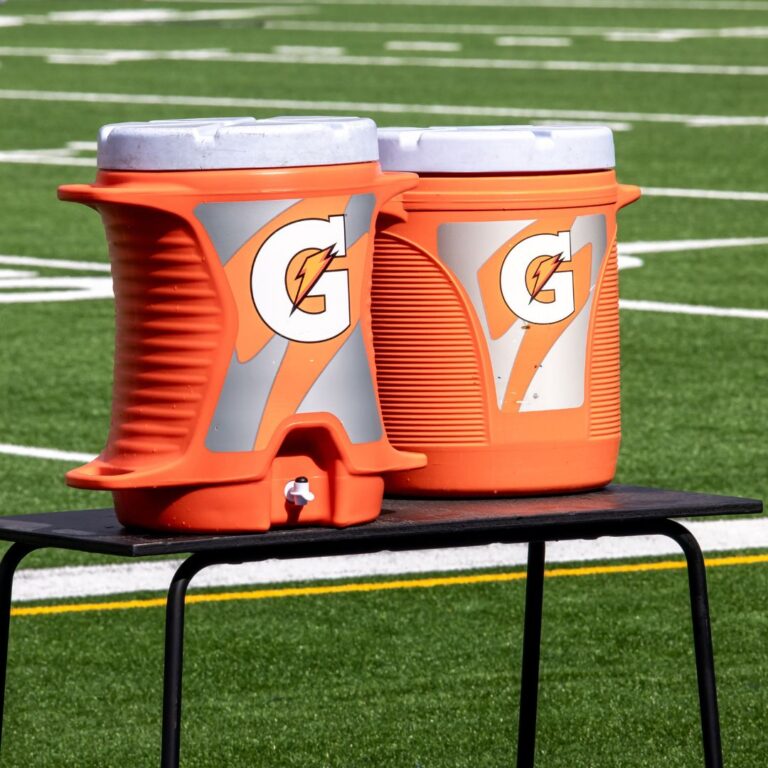A Problem on the Gridiron
The story of Gatorade began in 1965 at the University of Florida. Dr. Robert Cade, a nephrologist, and his team of researchers were approached by the university’s football coaching staff with a critical question: Why were so many players suffering from dehydration and poor performance in the Florida heat?
The researchers discovered that intense physical activity caused players to lose significant amounts of fluids, electrolytes, and carbohydrates, impairing their performance. Water alone couldn’t adequately replenish these losses, so the team set out to create a solution.
The Birth of the First Sports Drink
Dr. Cade and his team developed a formula that combined water, sodium, sugar, and potassium to replenish the nutrients lost during physical exertion. This drink, initially dubbed “Cade’s Cola,” was later renamed “Gatorade” in honor of the university’s mascot, the Florida Gators.
The effectiveness of Gatorade became evident during the 1967 Orange Bowl, where the Florida Gators defeated the Georgia Tech Yellow Jackets. The players attributed their enhanced performance to Gatorade, sparking national interest in the product.
Commercialization and Growth
The Move to Commercial Production
Recognizing its commercial potential, Dr. Cade and his team partnered with Stokely-Van Camp, a food and beverage company, to produce and distribute Gatorade on a larger scale. By 1969, Gatorade was available nationwide and quickly gained traction among athletes and fitness enthusiasts.
Acquisition by Quaker Oats
In 1983, Quaker Oats acquired Gatorade for $220 million, marking the beginning of its evolution into a global brand. Quaker Oats invested heavily in marketing, emphasizing Gatorade’s scientific origins and its ability to enhance athletic performance. The acquisition paved the way for Gatorade’s international expansion and dominance in the sports drink category.
PepsiCo Takes Over
A Strategic Move
In 2001, PepsiCo acquired Quaker Oats for $13.4 billion, making Gatorade a part of its expansive beverage portfolio. Under PepsiCo, Gatorade received even greater marketing resources and access to a global distribution network.
Innovations and Product Expansion
PepsiCo expanded Gatorade’s product lineup to cater to diverse consumer needs:
- G2: A low-calorie version targeting health-conscious consumers.
- Gatorade Zero: A sugar-free option for those seeking hydration without calories.
- Gatorade Endurance: A formula designed for endurance athletes. These innovations solidified Gatorade’s reputation as a brand that evolves with consumer demands.
Marketing Success: Tying Gatorade to Sports Excellence
Sponsorships and Endorsements
Gatorade’s marketing strategy revolves around its association with elite athletes and major sports organizations. Over the years, Gatorade has partnered with icons like Michael Jordan, Serena Williams, Usain Bolt, and Lionel Messi. These partnerships reinforce the brand’s image as the ultimate performance beverage.
Sports League Partnerships
Gatorade became the official sports drink of major leagues such as the NFL, NBA, and MLB. Its presence on the sidelines of high-profile games ensured constant visibility and reinforced its position as the drink of choice for athletes.
The “Be Like Mike” Campaign
In 1991, Gatorade launched the iconic “Be Like Mike” campaign featuring Michael Jordan. The campaign became a cultural phenomenon, driving brand recognition and sales to new heights.
Net Worth and Financial Success
Gatorade’s Market Dominance
Gatorade controls approximately 70% of the global sports drink market, making it the undisputed leader in its category. Its closest competitors include Powerade (owned by Coca-Cola) and BodyArmor (partially owned by Coca-Cola).
Annual Revenue
As of 2023, Gatorade generates an estimated annual revenue of over $5 billion. Its consistent sales growth is fueled by product innovation, marketing campaigns, and global expansion.
Contribution to PepsiCo
Gatorade is a key contributor to PepsiCo’s beverage segment, accounting for a significant portion of the company’s total revenue. PepsiCo, as of 2023, has a market cap of over $250 billion, with Gatorade playing a crucial role in its success.
Gatorade’s Global Reach
Presence in Over 80 Countries
Gatorade’s products are sold in more than 80 countries worldwide. Its ability to adapt to regional tastes and preferences has been instrumental in its global success.
Localized Flavors and Strategies
In addition to its core lineup, Gatorade offers region-specific flavors and formulations to cater to local markets. This adaptability ensures the brand remains relevant across diverse cultures and climates.
Challenges and Competition
The Rise of Health-Conscious Consumers
As consumers become more aware of sugar and calorie intake, Gatorade faces pressure to adapt. Competitors like BodyArmor and Propel have gained traction by offering natural ingredients and lower-calorie options.
Emerging Competitors
The sports hydration market has become increasingly crowded, with startups and boutique brands challenging Gatorade’s dominance. Despite this, Gatorade’s legacy, scale, and marketing power give it a significant advantage.
Cultural Impact of Gatorade
Beyond Sports
Gatorade has transcended its role as a sports drink to become a cultural icon. Its name is often used synonymously with hydration, and its branding has become ingrained in global sports culture.
Scientific Credibility
Gatorade’s commitment to research and development, including its collaboration with the Gatorade Sports Science Institute (GSSI), reinforces its reputation as a scientifically backed product designed for performance.
From its humble beginnings as a solution to dehydration on the football field to its current status as a multi-billion-dollar global brand, Gatorade’s history is a testament to innovation, marketing excellence, and the power of sports. With its strong financial standing, global reach, and commitment to evolving consumer needs, Gatorade remains the gold standard in sports hydration and performance beverages.

